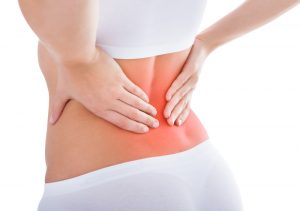Women often sacrifice comfort for fashion, skipping a meal to fit into that dress or risking hypothermia because no jacket goes with the outfit. It is a philosophy said best by French Impressionist painter Pierre Auguste-Renoir, “the pain passes, but beauty remains”. When it comes to wearing high heels this quote couldn’t be more incorrect. The pain does not pass and can lead to long term damage.
What are high heels doing to our bodies and how can we minimize the damage?
Recent research suggests that up to one third of women suffer permanent problems as a result of prolonged wearing of ‘killer heels’. These problems can begin as early as age 20.
Immediate Risks: The Stumble Factor 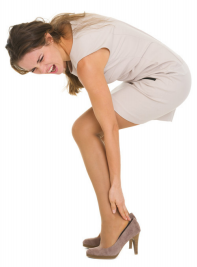
When a woman slips her feet into a pair of high heels, she immediately changes her center of balance and general ease of walking.
Whether you encounter a heel caught in a crack, an unlevel cobblestone or a simple step miscalculation, it is easy to fall or stumble in heels. This leads to the risk of a rolled or sprained ankle or twisted or sprained knees.
Long Term Risks
The centre of gravity shift not only affects your balance but also results in a redistribution of weight on the female body. If you’ve noticed
that you stand differently in heels than in flats, you’re not imagining things. The body’s alignment shifts forward, which places pressure on points of the body that were never built to sustain that stress. This altered alignment affects many areas of the body including the upper
back, neck, low back, hip, knee, calf, ankle and feet.
- The low back: When your centre of balance moves forward you bend your lower back to compensate and that changes the position of your spine, putting pressure on nerves in the back. This can cause sciatica, a painful condition where nerves become trapped, triggering pain and numbness as far down as the feet.
- The neck and shoulder region – The position and curvature of the neck and shoulder region can be significantly influenced by the
adaptive posture the body needs to take to maintain balance when wearing high heels. This can influence upper back pain, neck and headache pain. - The hips – are tilted forward to adjust to the increased weight through the ball of the foot. This increases the arch in your lower back (increasing your lumbar lordosis) and which places increased stress on the lower back and hip region and can lead to stiffness and pain in this area.
- The knee – Your knees bear the brunt of the postural changes. Studies show that high heels place excessive stress both on the front and back of the knees. One study found that wearing high heels increased the pressure on the inside of the knee by 26 percent. Osteoarthritis is common among women who have worn high heels for much of their adult lives.
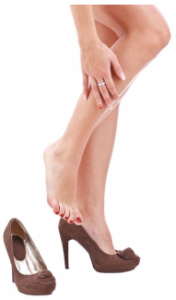 The calf – The calf naturally contracts when walking, this contraction intensifies when walking in a heel. With long term heel use the calf can shorten and tighten permanently. This can lead to foot, achilles, knee or hip pain. The Achilles is a tendon that attaches the calf to the foot; the tendon is designed to be flexible however prolonged heel use leads to shortening of the tendon. Once shortened the tendon is very painful to stretch and it becomes difficult for a women to wear flat shoes as this places the Achilles to stretch, which can result in inflammation and tendonitis.
The calf – The calf naturally contracts when walking, this contraction intensifies when walking in a heel. With long term heel use the calf can shorten and tighten permanently. This can lead to foot, achilles, knee or hip pain. The Achilles is a tendon that attaches the calf to the foot; the tendon is designed to be flexible however prolonged heel use leads to shortening of the tendon. Once shortened the tendon is very painful to stretch and it becomes difficult for a women to wear flat shoes as this places the Achilles to stretch, which can result in inflammation and tendonitis.- The ankle – Ankle injuries and sprains due to high heels can become chronic and lead to long term instability at the ankle. This increases your falls risk especially in the elderly or overweight population.
- The foot – There are many issues that can occur at the foot from heels
- Pump bump or Haglund’s deformity: is a bony enlargement at the back of the heel caused by straps and tight fitting shoes rubbing and irritating the back of the heel.
- Bunions: are a bony growth at the base of the big toe caused by tight, ill-fitting shoes. It causes the big toe to angle inwards towards the other toes and can lead to the bump becoming swollen, inflamed, and painful. Often surgery is required to treat the issue.
- Hammertoe: Tight-fitting shoes force you to crumple up their toes, shortening the muscles inside the toes and leaving them permanently bent.
- Morton’s neuroma – High heels with narrow toes often lead to increased thickness of the nerves in the foot. This can cause a lump in the underside of the foot. It’s usually found between the third and forth toes and results in pain and numbness in this area when weight bearing.
- Metatarsalgia – is ball of the foot pain and is due to the increased pressure through this area.
So what is a shoe-lover to do?
While no heel is safe, there are some strategies for mitigating the ill effects of a love affair with high heels: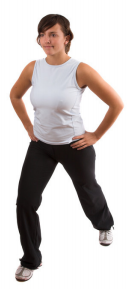
- Stretch: Every day you wear heels sit in a chair and use a yoga band or towel slung around your foot. Pull the band towards you as you stretch your toes towards your head. Another simple stretch you can do for your calf and Achilles. Always stretch both legs and keep the back of the heel on the ground.
- Use Commuter Shoes: City commuters walk a great deal on their routes to work. Use a supportive flat shoe on the unforgiving concrete of the sidewalk and save the heels for the absorbent carpets and cork floors of the office.
- Three Hour Rule: Wear heels for no longer than three hours at a time.
- Remove heels when sitting at a desk: This will reduce the risk of bunions, hammertoe and pump bump
- Choose a Wedge: Any heel that offers more surface area is putting less stress on the ball of the foot, so go with a chunky heel or a wedge.
- Alternate Heights: If your tendon doesn’t get positioned to the same length every day by wearing the same height heels, it won’t shorten to a specific height.
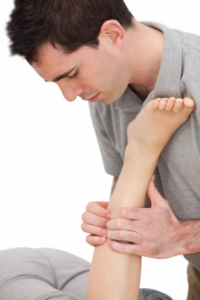 Make sure your heels fit correctly: If heels are too tight they can cause bunions, hammertoes and pump bump. If heels are too big your feet will slide forwards putting even more pressure on the toes.
Make sure your heels fit correctly: If heels are too tight they can cause bunions, hammertoes and pump bump. If heels are too big your feet will slide forwards putting even more pressure on the toes.- Wear NEW high heels around the house for to wear them in: This gives the feet a chance to get used tothem before you try something more strenuous like dancing.
- Rest and support: When you don’t need to be wearing heels pamper your feet. Wear supportive well-cushioned sneakers or padded dress shoes.
- Appropriate Treatment: Treatment may be required to help to reduce any issues in the body related to high heel wear. Physiotherapists are able to release tight muscles, combat changes in the skeletal system and provide suitable exercises and stretches helping to alter posture and relieve the pressure.
For further information contact Bodysmart on 9481 8708 or book in today.


